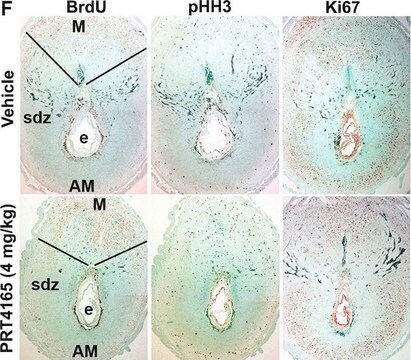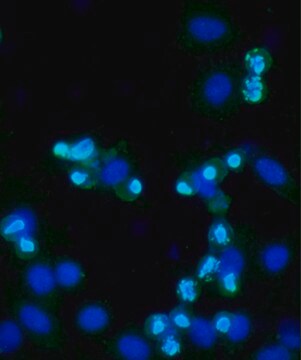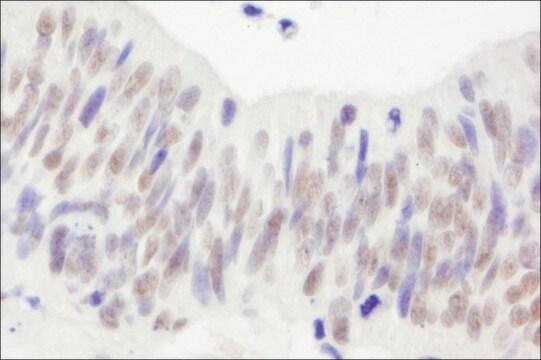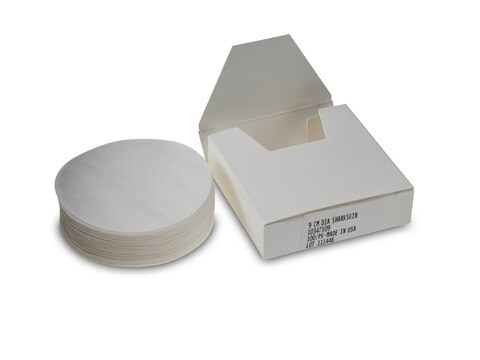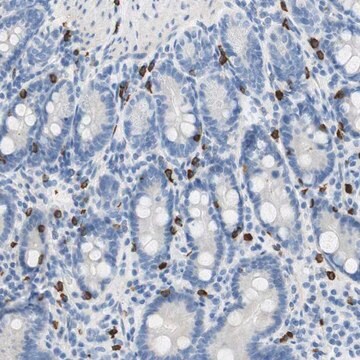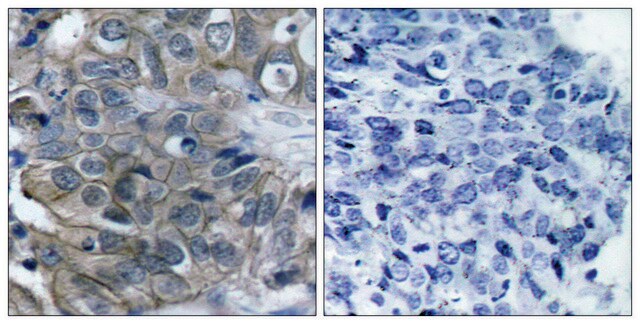05-616-C
Przeciwciało anty-Nibrin/Nbs1, klon EE15 (bez wodobrzusza)
clone EE15, from mouse
Synonim(y):
Nibryna, białko regulatorowe cyklu komórkowego p95, białko zespołu złamania Nijmegen 1, białko p95 kompleksu MRE11/RAD50
About This Item
Polecane produkty
pochodzenie biologiczne
mouse
Poziom jakości
forma przeciwciała
purified antibody
rodzaj przeciwciała
primary antibodies
klon
EE15, monoclonal
reaktywność gatunkowa
human
spodziewany brak reakcji z
mouse
metody
immunocytochemistry: suitable
immunoprecipitation (IP): suitable
western blot: suitable
izotyp
IgG1κ
numer dostępu NCBI
numer dostępu UniProt
Warunki transportu
wet ice
docelowa modyfikacja potranslacyjna
unmodified
informacje o genach
mouse ... Nbn(27354)
Opis ogólny
Specyficzność
Immunogen
Zastosowanie
Analiza Western Blotting: Reprezentatywna partia wykryła przesunięcie pozornej masy cząsteczkowej Nbs w lizatach z napromieniowanych gamma komórek ludzkich (U2OS, IMR90, HEK293, BJAB) (Wu, X., et al. (2000). Nature. 405(6785):477-482).
Analiza immunocytochemiczna: Reprezentatywna partia wykryła ogniska jądrowe NBS1-dodatnie za pomocą immunocytochemii fluorescencyjnej (Wu, X., et al. (2000). Nature. 289(5476):11).
Analiza immunoprecypitacji: 4 μg tego przeciwciała immunoprecypitowało Nibrin/Nbs1 z 500 μg lizatu Jurkat RIPA.
Epigenetyka i funkcje jądrowe
Cykl komórkowy, replikacja i naprawa DNA
Jakość
Western Blotting Analysis: 1.0 µg/mL of this antibody detected Nibrin/Nbs1 in 10 µg of HeLa cell lysate.
Opis wartości docelowych
Powiązanie
Postać fizyczna
Przechowywanie i stabilność
Inne uwagi
Oświadczenie o zrzeczeniu się odpowiedzialności
Nie możesz znaleźć właściwego produktu?
Wypróbuj nasz Narzędzie selektora produktów.
Kod klasy składowania
12 - Non Combustible Liquids
Klasa zagrożenia wodnego (WGK)
WGK 1
Temperatura zapłonu (°F)
Not applicable
Temperatura zapłonu (°C)
Not applicable
Certyfikaty analizy (CoA)
Poszukaj Certyfikaty analizy (CoA), wpisując numer partii/serii produktów. Numery serii i partii można znaleźć na etykiecie produktu po słowach „seria” lub „partia”.
Masz już ten produkt?
Dokumenty związane z niedawno zakupionymi produktami zostały zamieszczone w Bibliotece dokumentów.
Nasz zespół naukowców ma doświadczenie we wszystkich obszarach badań, w tym w naukach przyrodniczych, materiałoznawstwie, syntezie chemicznej, chromatografii, analityce i wielu innych dziedzinach.
Skontaktuj się z zespołem ds. pomocy technicznej

